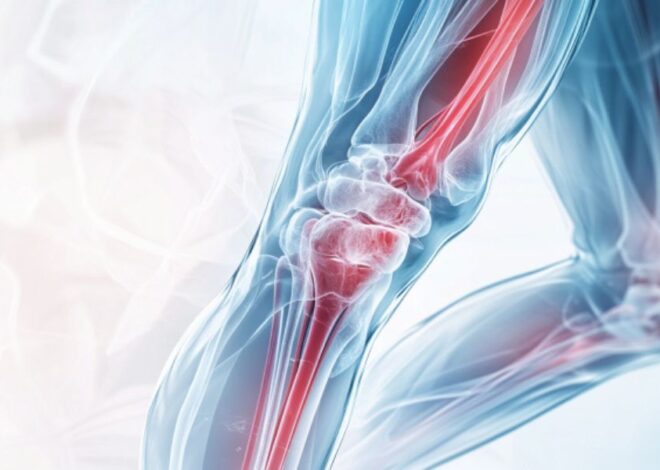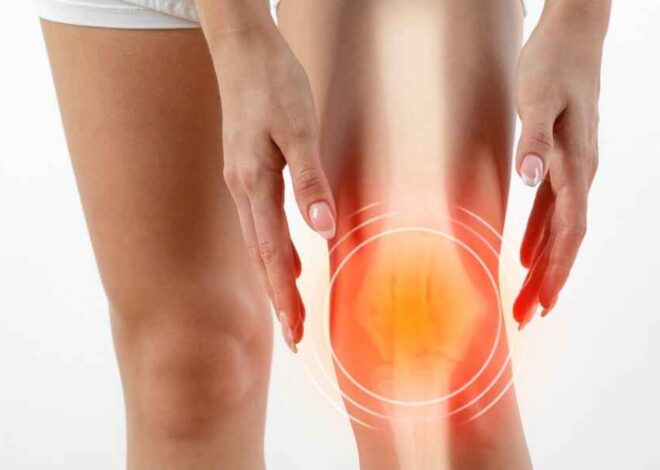
Using Castor Oil for Knee Pain Best Guide 2024
Last updated on December 12th, 2025 at 04:40 am
Castor oil is extracted from the seeds of the castor plant, also known as the Ricinus communis plant. This light yellow and thick oil is commonly used as a lubricant and a laxative. Additionally, castor oil is popular for beauty and healing purposes.
It has anti-inflammatory, antibacterial, and antifungal properties, making it an effective home remedy for various ailments, including knee pain. The oil can be applied directly to the skin or diluted and used on wounds, injuries, and swollen areas to relieve pain.
Castor oil is especially beneficial for arthritis, sciatica, knee injuries, and joint pain. It is a remarkable remedy for pain caused by injuries, strained muscles, and joints. The oil effectively combats the factors causing knee pain and helps relax strained muscles.
Castor oil also increases the number of lymphocytes in the body, which protects the body from harmful germs and toxins. These lymphocytes act like immune system soldiers, fighting against severe knee and joint pain. The more lymphocytes present in the immune system, the better the relief from joint pain.
This guide will provide complete information on how to use castor oil for knee pain, its benefits, and how to use it effectively.
Table of Contents
Common Causes of Knee Pain
Various factors, including aging, injuries like sprains or strains, and diseases such as arthritis can cause knee pain. The pain may start suddenly due to an injury or develop gradually.
Some common causes of knee pain include:
- Tendinitis occurs when the tendons in the front of the knee become inflamed or irritated, leading to pain.
- Osteoarthritis occurs when the knee joint cartilage wears away, causing bones to rub together and leading to pain.
- Rheumatoid Arthritis This disease causes the body’s immune system to attack the knee joint, leading to inflammation, pain, and swelling.
- Gout is arthritis where uric acid crystals build up in the knee joint, causing intense pain and swelling.
- Bursitis In this condition, the small fluid-filled sacs in the knee joint become inflamed, resulting in pain.
- Bursitis: In this condition, the small fluid-filled sacs in the knee joint become inflamed, resulting in pain.
Symptoms of Knee Joint Issues
- Pain and Stiffness
- Swelling
- Redness and Warmth
- Weakness or Instability
Castor Oil for Knee Pain Relief
To treat knee pain effectively, always choose cold-pressed, organic castor oil that has a light yellow color and a thick consistency. Buying from a trusted brand is important to ensure the oil is pure and free from harmful chemicals. This natural remedy is less risky and has fewer side effects than chemical-based medicines and ointments. You can apply a small amount of castor oil directly to your skin, but try making a castor oil pack for the best results. Here’s how to do it:

Ingredients:
- Cold-pressed castor oil: 3 tablespoons (you may need more or less depending on the size of the plastic wrap or cloth)
- Plastic wrap or cloth: 1-2 pieces
- Heating pad: 1
- Sterile cotton balls: 2-3
- Towel: 1
Instructions:
- Soak the plastic wrap or cloth in warm water.
- Let it soak for a bit, then wring it out so it’s damp but not dripping.
- Spread 3 tablespoons (or the appropriate amount) of castor oil evenly over the plastic wrap.
- Carefully wrap the oil-covered plastic or cloth around your knee.
- Leave the castor oil pack on for 8-10 hours, ideally overnight.
- Occasionally use a heating pad to keep the pack warm.
- If the oil spreads to other areas, use a towel to wipe it off.
- After 8-10 hours, remove the pack.
- Use a warm, damp towel to clean any remaining oil from your knee.
- Repeat this process daily until your knee pain improves.
Another option is to mix cold castor oil with a warm pepper ointment and apply it together for added relief.
Castor Oil for Knee Joint Pain
Castor oil is a traditional and effective remedy for knee joint pain, especially for those dealing with arthritis, sciatica, and other joint issues. It has properties that help reduce inflammation and relieve pain, making it beneficial for easing pain and swelling in the knee joints. When applied to the skin, castor oil is absorbed and works to soothe the affected area, improving blood circulation, reducing inflammation, and enhancing joint flexibility.
If you regularly use castor oil for your knee joint pain, you may notice a decrease in pain and an improvement in movement. This remedy can be very helpful when combined with both traditional and alternative treatments.
Health Benefits of Castor Oil
Castor oil has several health benefits, including its anti-inflammatory and pain-relieving properties. It can also improve blood circulation. When applied to the skin, castor oil helps increase blood flow, which may reduce inflammation and pain, especially in the knees.
Using castor oil for knee pain not only helps relieve pain and inflammation but also addresses underlying issues related to poor blood circulation. For these reasons, castor oil is considered an effective treatment for knee pain.
Anti-Inflammatory Properties
Castor oil is rich in ricinoleic acid a type of fatty acid known for its anti-inflammatory properties. These properties effectively reduce pain and swelling in the knee joints.
This anti-inflammatory effect is especially beneficial for those dealing with joint inflammation, such as knee pain. By reducing inflammation, castor oil can help ease discomfort and pain.
When applied to the skin, castor oil is absorbed and penetrates the affected joint, helping to reduce inflammation and pain.
Improving Blood Circulation
Beyond its anti-inflammatory benefits, applying castor oil to the knees can also enhance blood circulation. Improved circulation can lead to reduced knee joint pain.
The ricinoleic acid in castor oil not only helps relieve pain but also boosts blood flow when massaged into the affected area.
With better blood circulation, joint flexibility and mobility may improve, making castor oil an excellent natural option for relieving knee joint pain.
Benefits and How It Works
| Benefit | Description |
|---|---|
| Reduces Inflammation | Contains ricinoleic acid, which has anti-inflammatory properties. |
| Alleviates Pain | Provides natural pain-relieving effects. |
| Enhances Blood Flow | Improves circulation in the affected area. |
Castor Oil Mixtures
Castor oil can help ease knee pain on its own, but mixing it with other natural ingredients can enhance its effectiveness. Here’s how you can combine castor oil with turmeric and essential oils for better results.
Castor Oil and Turmeric Mixture
Turmeric is well-known for its strong anti-inflammatory properties, which can help reduce knee pain when mixed with castor oil. Here’s how to make this mixture:
| Ingredients | Instructions |
|---|---|
| 2 tablespoons of castor oil | Combine the castor oil and turmeric powder until you get a smooth paste. |
| 1 teaspoon of turmeric powder | Apply the paste to your knee and gently massage it in. |
| Let it sit for 15-20 minutes, then rinse it off with warm water. |
Castor Oil and Essential Oils Mixture
Essential oils, especially peppermint oil, can also be mixed with castor oil to help alleviate knee pain. Peppermint oil is known for its pain-relieving and anti-inflammatory properties, which work well with castor oil.
| Ingredients | Instructions |
|---|---|
| 2 tablespoons of castor oil | Add the peppermint oil to the castor oil and mix thoroughly. |
| 5 drops of peppermint essential oil | Apply the mixture to your knee and massage it in using circular motions. |
| Leave it on for at least 30 minutes, then wash it off with warm water. |
Traditional Treatments for Knee Joint Pain
Several traditional treatments are available for knee joint pain, and the choice of treatment usually depends on the cause of the pain. Non-surgical treatments include physical therapy, pain relief medications, and anti-inflammatory drugs. Additionally, supportive devices like braces or shoe inserts can be used.
In some cases, surgery may be necessary. This can include procedures like arthroscopy (a process where doctors can view, diagnose, and treat issues inside the knee joint), partial knee replacement, or full knee replacement.
However, more and more people are trying to manage their knee joint pain using natural methods. One such method is the use of castor oil. According to the Times of India, castor oil can effectively reduce knee joint pain by decreasing inflammation and improving blood circulation. This makes castor oil a natural alternative to traditional treatments for knee joint pain. The next sections will discuss the benefits and uses of castor oil in more detail.
Possible Side Effects of Castor Oil
Castor oil is generally considered safe with minimal toxic effects. However, it’s important to note that the castor plant contains a toxic substance called ricin. Fortunately, ricin is removed during the production of castor oil, making it safe for use, even over long periods. If you experience symptoms of ricin poisoning, such as stomach bleeding, convulsions, trouble breathing, or swelling, seek medical help immediately, as there is no antidote for ricin.
Although castor oil packs can help relieve pain and inflammation, it’s essential to consult a healthcare provider to determine the best method and frequency of use for you.
Who Should Avoid Castor Oil?
Certain people should avoid using castor oil under specific conditions. For example, pregnant women should not use castor oil, as it can affect the muscles and potentially lead to premature labor. Those with digestive issues like bowel obstruction, appendicitis, or other medical conditions should also avoid castor oil.
If you’ve recently had surgery, have wounds, or are sensitive to castor oil, you should avoid using it. However, castor oil packs are generally safe if you don’t have issues with your knees or shoulders.
Clinical Trials and Research
A clinical trial focusing on the effectiveness of castor oil for knee pain was published on March 12, 2009, in the journal “Complementary Therapies in Clinical Practice.” The study showed that using castor oil packs significantly reduced knee pain. Participants applied these packs daily for seven days, leading to noticeable pain relief and improved mobility.
The study included 30 patients, split into two groups: one group used castor oil packs, while the other received a placebo (fake packs). The group with castor oil packs experienced a greater reduction in pain and better physical function. Their pain levels dropped by about 50%, which was significantly more than the placebo group.
The study concluded that castor oil packs are a safe, well-tolerated, and effective treatment for knee pain. No participants reported any negative side effects from using the castor oil packs.
Experts’ Views on Castor Oil for Pain Relief
Experts have favorable opinions about using castor oil. Dr. Claire Forster from The Farm Practice in Cambridgeshire recommends castor oil packs for her patients. She notes that these packs can help alleviate pain and inflammation, and her patients have reported positive results.
Castor oil packs are known to ease joint and muscle pain, reduce inflammation, and enhance blood circulation. They also have antibacterial and antiviral properties, making them a valuable treatment option.
Scientific research supports the idea that castor oil is a natural and safe alternative for managing knee pain.
In summary, both scientific evidence and expert opinions suggest that castor oil can be effective for knee pain. However, it’s important to consult with your doctor before starting any new treatment.
Frequently Asked Questions (FAQs)
Certainly! Here’s how you can add the heading “Is Castor Oil Good for Knee Pain?” to your article along with the relevant content:
Is Castor Oil Good for Knee Pain?
Yes, castor oil is considered beneficial for knee pain due to its potent anti-inflammatory and pain-relieving properties. The ricinoleic acid found in castor oil effectively reduces inflammation, which is often the root cause of knee pain. By improving blood circulation and reducing swelling, castor oil helps alleviate discomfort and promotes joint mobility.
Many people find relief from conditions like arthritis, sciatica, and joint injuries by using castor oil regularly. It can be applied directly to the skin, used in a castor oil pack, or combined with other natural ingredients to enhance its effectiveness. While castor oil is a natural remedy, it’s important to use it properly and consult with a healthcare provider to ensure it’s the right treatment for your specific knee pain.
Conventional vs. Alternative Treatments
Conventional treatments for knee pain usually involve medications, physical therapy, and sometimes surgery in severe cases. On the other hand, alternative treatments, like using castor oil, focus on natural remedies to reduce pain and support knee health.
Can I Use Castor Oil Alongside Other Treatments?
Yes, castor oil can be used in conjunction with other treatments, but it’s always best to consult your healthcare provider first.
Is Black Castor Oil More Effective for Knee Pain?
Black castor oil may offer stronger anti-inflammatory effects due to its higher ash content, making it a good option for more severe pain.
Can Castor Oil Cure Knee Pain Permanently?
While castor oil can provide significant relief, it’s not a cure for underlying conditions like arthritis. Regular use can help manage symptoms.
What Type of Castor Oil is Best for Knee Pain?
Cold-pressed, organic castor oil is recommended for the best results.
Where to Buy Quality Castor Oil for Knee Pain
- Online Retailers: Amazon, iHerb, and Vitacost offer a wide selection.
- Health Food Stores: Many local health food stores carry high-quality castor oil.
- Pharmacies: Some pharmacies stock therapeutic-grade castor oil.
Choosing the Right Castor Oil for Your Needs
- Organic vs. Non-Organic: Always opt for organic to avoid harmful chemicals.
- Cold-Pressed: Choose cold-pressed oil to ensure the maximum retention of nutrients.
- User Reviews: Check reviews to find the most effective brands.
Safety Precautions When Using Castor Oil for Knee Pain
While castor oil may provide relief for knee pain, it’s essential to take certain safety precautions. First, conduct a patch test by applying a small amount of castor oil to a small area of your skin to check for any adverse reactions or allergies. If you experience redness, itching, or discomfort, discontinue use and consult a healthcare professional. Additionally, because of castor oil’s potency, it’s wise to consult a healthcare provider before starting its use to ensure it is safe and suitable for your specific condition. If you have any existing skin conditions, allergies, or other health concerns, seeking medical advice is important, as your healthcare provider can guide you on the safe and effective use of castor oil.
Conclusion
Castor oil is a natural and effective way to reduce knee pain. Its anti-inflammatory, antimicrobial, and antifungal properties make it helpful for conditions like arthritis, sciatica, and joint pain. By improving blood circulation and reducing inflammation, castor oil can offer relief and serve as an additional option alongside traditional treatments.
For the best results, use cold-pressed, organic castor oil and consider adding it to your natural treatment routine. Castor oil is generally safe, but it’s a good idea to consult your doctor about how to use it and its compatibility with other treatments. With regular use and proper application, castor oil can provide significant relief and improve knee health.
References
[1]: https://www.webmd.com/diet/castor-oil-health-benefits
[2]: https://theformpractice.com/2022/03/28/castor-oil-for-pain-relief/
[3]: https://www.thriveco.in/blogs/ingredients/tips-to-use-castor-oil-for-knee-pain
[4]: https://pubmed.ncbi.nlm.nih.gov/19288533/
[5]: https://www.ncbi.nlm.nih.gov/books/NBK551626/
[6]: https://theformpractice.com/2022/03/28/castor-oil-for-pain-relief/


